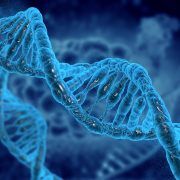Walk Through the Differences That Define the Stages of Life
You’re not getting any younger—though you probably don’t need to be reminded of that fact. Aging can be exciting, scary, sad, and just about every feeling in between. Needless to say, moving through the stages of life is a complex process—emotionally and physically.
As you age, you pass from infancy, adolescence, emerging adulthood, and eventually to middle age and beyond. These stages of life bring their own sets of challenges and rewards. But what exactly sets them apart? What is adolescence? What is adulthood? When do those transitions between stages happen? And when does adulthood become middle age?
Keep reading for the answers to these questions and more. By the end, you’ll have broken down adolescence, adulthood, and middle age. And you’ll be able to explain the characteristics and defining features of the stages of life.
What is Adolescence: It’s More Than Just the Teenage Years
Most people think of adolescents and teenagers as more or less the same group. And while there is a lot of overlap, there are differences. The teenage years begin at 13 and end at 19. Adolescence, on the other hand, starts somewhere around age 10 and continues until your early twenties.
This broadness is necessary because adolescence refers to the transition from childhood to adulthood—physically and mentally. This is a time of drastic physical, emotional, and social development. Because the adolescent stage of life spans over a decade, it is often broken into three phases: early, middle, and late adolescence. And each phase is characterized by its own set of changes and development:
Early adolescence (ages 10-13): This phase of adolescence is responsible for those oh-so-hated middle school years. Growth spurts typically begin during this time (especially for girls), as do other physical changes—like the growth of body hair and development of primary and secondary sex characteristics. These sudden, often drastic, changes can lead pre-teens to feel awkward or uncomfortable in their bodies.
While these physical changes are the scientific markers of early adolescence, there are also many mental changes and developments common in this stage of life. During early adolescence, preteens and teens often begin to develop a stronger sense of self. This often includes testing the limits of their independence and pushing for more privacy and self-determination.
In other words, during early adolescence, most individuals want to make choices for themselves. It could be what they wear, eat, or how their room looks. As early adolescents begin to form opinions, they often exhibit black-and-white thinking.
Middle adolescence (ages 14-17): There’s no clear line between early, middle, and late adolescence because everybody develops on a different timeline. But some developmental patterns hold true generally. Girls, for example, often hit their growth spurts in early adolescence, while many boys don’t have theirs until middle adolescence. And so much of middle adolescence, from a physical-development standpoint, can be described as “more of the same.”
During middle adolescence, teens experience rapid cognitive development. Though the brain won’t be fully developed for several more years, certain brain functions—such as logical reasoning—reach maturity by age 16. This means teens are just as capable of logical reasoning as adults. (Whether their ability to think logically translates into rational behavior or not is another story.)
Middle adolescence is also a time when many teens begin to explore romantic relationships. This often takes the form of dating. And teens may also begin to question and explore their sexuality to create and understand their own sexual identity.
All of these changes go hand-in-hand with teens’ desire for independence that typically grows stronger with age. And for teens in the United States, middle adolescence often brings the keys (pun intended) to that ultimate form of independence: a driver’s license.
Late adolescence (ages 18-21): If you’re surprised to see 21 included under adolescence, don’t worry—you’re probably not the only one! Teens legally become adults at age 18, so people tend to think this is when adolescence ends. In terms of development and growth, however, humans don’t reach adulthood until sometime in their twenties.
By late adolescence, most of your physical growth is out of the way, so the development that occurs during this stage is mostly cognitive. Teens are infamous for taking risks, but as they age, they improve at thinking ahead. This is all thanks to brain development.
The prefrontal cortex, which is the last part of the brain to develop, has just about reached its adult form by late adolescence. And the prefrontal cortex is responsible for decision making, among other key operations. (It’s important to note that the brain is still only mostly developed. It won’t reach full maturity until age 25 or 26.)
In this final stage of adolescence, the beliefs, identity, and values that began to develop in earlier years also become far more stable. They may change with experience, of course, but as you transition into adulthood these aspects of your identity are often what keep you rooted.
What is Adulthood and How to Tell When Adolescence Officially Ends
Kids and teens want more than anything to be a grown up. This raises a question without an easy answer: what exactly is a grown up? Ask any adult and they probably won’t give you a straight answer. Legally, anyone older than 18 is an adult in the U.S. But, as mentioned above, this cutoff doesn’t make much sense from a developmental standpoint.
So where can we draw the line between the adolescent and adulthood stages of life?
By age 22, the body is almost entirely done growing. Your bones (except for your collarbone, which won’t fully mature until your early-to-mid thirties) are the size they’ll be for the rest of your adult life. Your wisdom teeth have come in. And your brain is finishing up its final prefrontal cortex development.
From this time until middle age, your body operates at its peak physical performance. This doesn’t mean you’ll be in the best shape of your life. But it does mean your heart, lungs, muscles, and other organs will be operating at their most efficient and effective levels.
With these physical developments out of the way, adulthood brings a whole new set of developmental challenges: as a young adult, you will develop the social, emotional, and lifestyle habits that shape the rest of your life. No pressure, right?
Don’t worry, these changes don’t happen overnight. You’re not an adolescent one day and a full-fledged adult the next. It’s a gradual process. For this reason, many scientists have defined a new intermediary stage of life development: early or emerging adulthood.
What is emerging adulthood: Emerging adulthood is a term some researchers use to describe the transitional phase between adolescence and adulthood. It is not a developmental stage, per se, but rather a period of social and emotional exploration and growth. Emerging adulthood is a time when many young adults begin to explore various jobs, establish their first serious romantic relationships, and navigate the new set of challenges “adulthood” brings. (These challenges include living independently, finding a career, and, in some cases, becoming a parent or spouse.)
It is nearly impossible to pin down exact age boundaries for emerging adulthood because this stage varies widely from person to person. Some may settle into adulthood by 25, while others are still struggling to establish their adult identity well into their late twenties. Which is to say, describing adulthood isn’t an exact science.
Consider the question posed at the start of this section again: what exactly is a grown up? Or, in other words, what is adulthood? At this point, you’ve been given two ways to answer this question. You can approach it from a developmental standpoint or from a social and emotional standpoint.
The first provides a much more clear-cut answer: adulthood begins around age 22, when the physical developments that characterize adolescence are complete. But, as outlined above, this approach doesn’t always give a satisfying answer. It seems to only capture part of the picture. Most of all, it doesn’t pin down what adulthood means.
To capture the full picture of adulthood, you also need to consider social factors. Is having a job part of adulthood? Living independently? Having stable romantic relationships? You’ll have to answer those questions for yourself.
So what is adulthood? Sometimes the best answer might be “I know it when I see it.”
Middle Age: It’s Not All Downhill From Here
Emerging adulthood may be a vague, loosely defined stage of life. But middle age has clearer boundaries. It begins at 40 and ends at 65—give or take a few years on either end.
During this period, most people’s lives have stabilized in comparison to their twenties and thirties. By middle age, you’ll likely have settled into a career or career field, become comfortable with your beliefs and values, and are maintaining long-term, stable friendships and relationships. If early adulthood is a time of exploration and discovery, middle age is a time of settling in.
As you approach and move through middle age, you might find yourself frequently thinking, “I’m not as young as I used to be”—especially while exercising. People tend to hit peak physical performance in early adulthood. From there on out, the wear and tear on your body will become more apparent. It’s a natural part of aging.
This manifests itself in several ways. You might find yourself bouncing back from injuries much more slowly or getting winded faster. Additionally, risk for certain health conditions becomes much higher in middle age. Screening for these conditions can help detect them early—and early detection is a crucial part of treatment. After the age of 40, you should start screening for high blood pressure, diabetes, and heart disease. You may also screen for breast and cervical cancer if you are a woman, and prostate cancer if you are a man.
This might sound like a drag, but life is not all downhill from here! Studies show that happiness and life satisfaction bottoms out somewhere between ages 45 and 50—right as you are hitting middle age. From there on out, the older you get, the happier and more satisfied you will probably be.
Take Care of Your Health at Every Stage of Life
Every stage of life comes with unique challenges and rewards. So whether you’re a teen eager to grow up or an adult wishing you could turn back the clock, remember to focus on the present. Take care of your health no matter your age. It’s never too early or too late to make your lifestyle a little bit healthier. And take time to appreciate the joys each stage of life has to offer!
References
https://courses.lumenlearning.com/boundless-psychology/chapter/early-and-middle-adulthood/
https://cls.ucl.ac.uk/over-a-third-of-adults-have-multiple-health-problems-in-midlife/
https://aaci.org/healthy-living-blog-the-importance-of-preventive-health-screenings-in-middle-age/
https://www.frontiersin.org/articles/10.3389/fendo.2019.00918/full
https://open.maricopa.edu/devpsych/chapter/chapter-9-early-adulthood/
https://www.theatlantic.com/health/archive/2016/01/when-are-you-really-an-adult/422487/
https://my.clevelandclinic.org/health/articles/7060-adolescent-development
https://www.healthychildren.org/English/ages-stages/teen/Pages/Stages-of-Adolescence.aspx
https://www.weforum.org/agenda/2015/11/at-what-age-does-happiness-peak/














